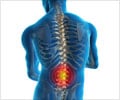- The regeneration of nerve cells following spinal cord injury is prevented by scar tissue that consists of chondroitin sulphate proteoglycans
- Transplanted cells obtained from the nasal mucosa of dogs that are genetically engineered to produce an enzyme that breaks down the scar have been found to promote the nerve regeneration in rats
- Further studies could result in the use of a similar approach in humans with spinal cord injuries.
- They obtained cells from the nasal mucosa of dogs called olfactory-ensheathing cells. These cells have the property of regenerating and repairing throughout life and have been earlier shown to support and promote the regeneration of nerves, along with modulating an immune response, interacting with supporting cells called astrocytes and promoting the formation of the myelin tissue (the tissue that surrounds nerves).
- The cells were genetically modified in the laboratory using the lentiviral vectors to secrete the ChABC enzyme.
- When the cells were transplanted into rodents with spinal cord injury, they secreted the enzyme, resulting in sprouting of the nerves of the spinal cord. The mean cellular survival rate was only 6% at 4 weeks following the transplantation. The poor survival of the cells could be due to the timing of the transplantation (transplantation immediately following an injury is more likely to be effective than in chronic lesions), immune rejection of the grafted cells since canine cells were introduced into rodents, the hostile environment of the spinal cord lesion or shock to the cells due to their transfer from culture to transplant. The growth of nerves was mainly noted 2 to 3 mm below the injury.
About Spinal Cord Injuries
The spinal cord mediates the communication between the brain and the peripheral nerves An injury to the spinal cord can cause changes in the muscle strength, sensations and other functions below the level of the injury, which could be temporary or permanent. Motor vehicle accidents, falls from heights or in the elderly, and acts of violence are common causes of spinal cord injuries. An injury at a higher level has more serious consequences than at a low level.Reference:
- Carwardine D, Prager J, Neeves J, Muir EM, Uney J, Granger N, et al. (2017)Transplantation of canine olfactory ensheathing cells producing chondroitinase ABC promotes chondroitin sulphate proteoglycan digestion and axonal sprouting following spinal cord injury. PLoS ONE 12(12): e0188967. https://doi.org/10.1371/journal.pone.0188967
Source-Medindia














